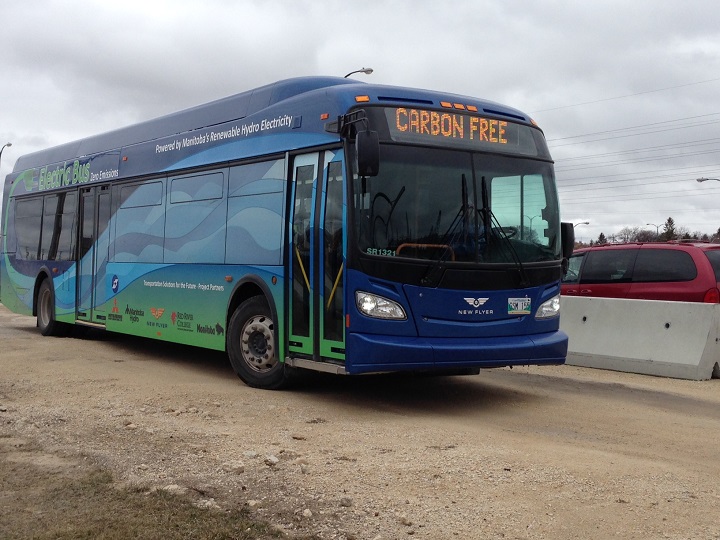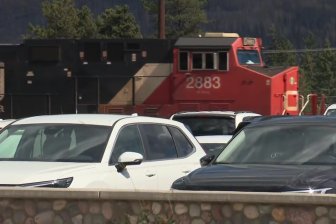As the conversation continues surrounding what green measures can be accomplished with revenue from the new carbon tax, an old report now surfacing has some recommendations for Winnipeg Transit.

The joint task force report between the city and province recommends adding up to 20 electric buses to Winnipeg Transit’s fleet.
The report is dated July 2016, completed by a task force set up by the previous government, but just became public in recent days. It outlines how much it would cost and explains the impact such a move would have on Transit’s overall carbon emissions.
“I’m in ongoing conversations at the federal level and looking forward to conversations at the city level,” Sustainable Development Minister Rochelle Squires explained. “We certainly do see the value in seeing Transit reduce its carbon footprint. Electrification of transit is definitely high up there on our shared priority list.”
Winnipeg Transit began using electric buses in 2014, when four such vehicles were added to the fleet.

Get breaking National news
Depending on how often the buses would be on the road, they would cost anywhere between $130,000 and $160,000 more per bus than a diesel unit. This includes the necessary cost of charging equipment.
Greenhouse gas emissions would be slashed, as electric buses produce three kilograms of emissions per 100 kilometres; that’s 98 per cent less than a diesel bus produces.
With the new carbon tax of close to seven cents a litre on diesel, Winnipeg Transit has said the tax will add more than $1 million in extra costs.
“Given the still relatively high capital cost for electric buses and associated charging infrastructure, the task force analysis shows the electric bus option to be somewhat more costly overall than diesel buses for the evaluated scenarios,” the report explained.
However, a switch to electric buses could create a good deal of operational savings.
“Although a gap exists to achieve economic viability, the gap is neither overwhelming nor insurmountable, with the longer-term advantage leaning toward electric buses. This is because of declining costs for batteries, and uncertain but likely higher costs for diesel fuel, including the effects of a price on carbon.”
The report recommended adding 12-20 buses in the short term, though no specific timeline was listed.
That would include figuring out how to best integrate the buses into service, as they can’t be rerouted as easily as a diesel unit because they need to be recharged more often than a diesel needs refueling.
Over the long term, the report recommended adding 120-200 more electric buses, before replacing the entire fleet with electric units.
- Jasper mayor says CN Rail relocation will be devastating: ‘Deeply disappointed’
- Retired Quebec teacher buys winning lottery ticket at last minute, wins $40M
- N.B. election: Higgs went to ‘very dark place’ with Liberal joke, opponent says
- GM, Volvo, Land Rover vehicles among those in big recall. What to know












Comments